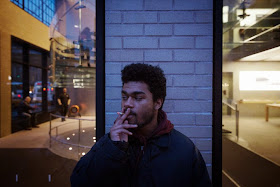Shameful. Make de Blasio a one-term Mayor. Get people who honor their own promises to run.
Betsy Combier
 |
| NYC Mayor Bill de Blasio |
Housing Homeless Youth Poses Challenge for Mayor de Blasio
 |
| Lijuan Hartfield, 18, has been homeless for the past two months. He said shelters for youths always have a waiting list. |
Lijuan Hartfield often caught up on sleep on the subway, at friends’ apartments, sometimes at a 24-hour McDonald’s.
“Embarrassing,” he said. “And I have to buy something.”
Eighteen years old and until recently homeless, Mr. Hartfield said shelters for young people always had a waiting list, so he spent his days figuring out where he would spend his nights. Once, he said, he sought refuge in a drop-in center for homeless adult men with mental illnesses.
“I slept in a chair with other people sleeping in chairs,” he said. “Poverty will really take a toll on your mental health.”
During the mayoral campaign, Mayor Bill de Blasio said he would see to it that all homeless youths had beds. But after advocates for the homeless filed a federal lawsuit accusing the city of illegally denying young people shelter, just before he took office, the mayor has surprised them, they said, by fighting the case.
“It’s incredibly disheartening,” said Kimberly Forte, a supervising attorney with the Legal Aid Society, which filed the lawsuit in the waning days of Mayor Michael R. Bloomberg’s tenure in 2013. “We’re not seeing a new way of thinking about young people when it comes to homelessness from this administration.”
“It’s incredibly disheartening,” said Kimberly Forte, a supervising attorney with the Legal Aid Society, which filed the lawsuit in the waning days of Mayor Michael R. Bloomberg’s tenure in 2013. “We’re not seeing a new way of thinking about young people when it comes to homelessness from this administration.”
 |
| Tanzina Mosammat, 19, who has been at Covenant House since December, is getting help finding a job as a store clerk or restaurant hostess. |
 |
| Mr. Hartfield often hangs out at the Apple Store in the Meatpacking District where he checks email and social media. |
No comments:
Post a Comment
Please do not use offensive language